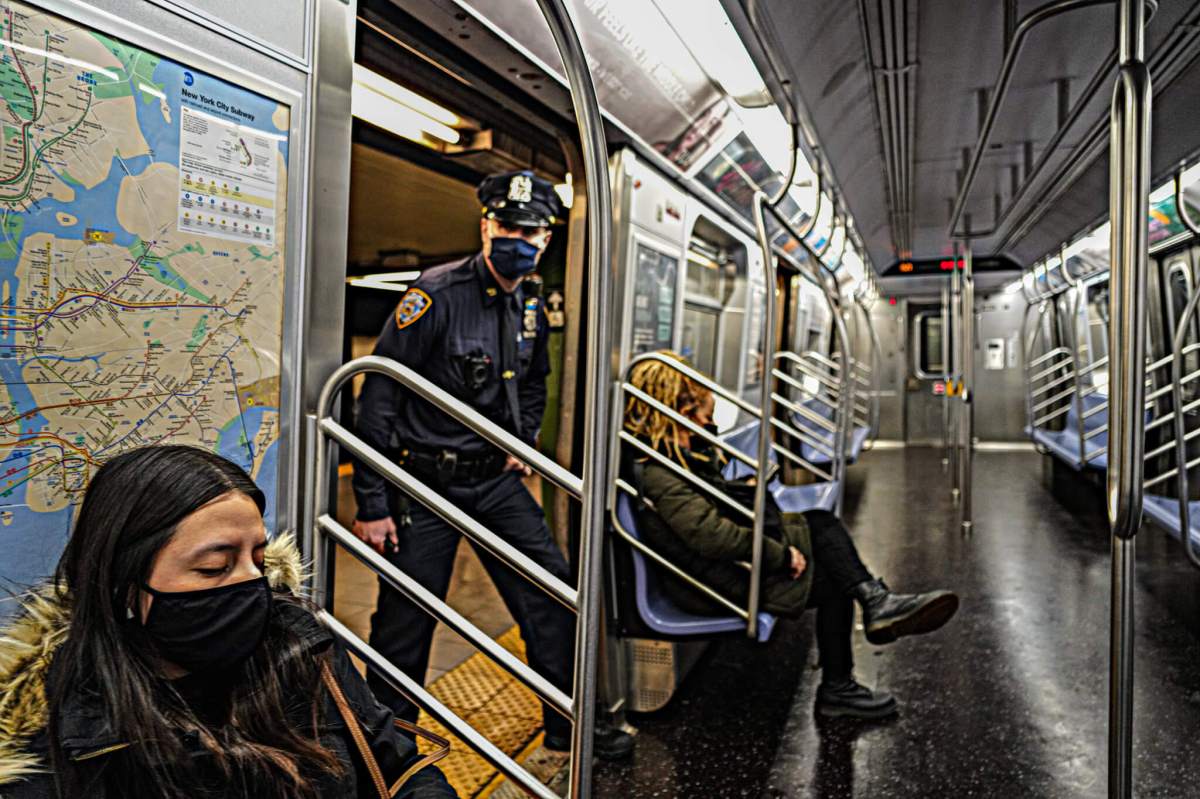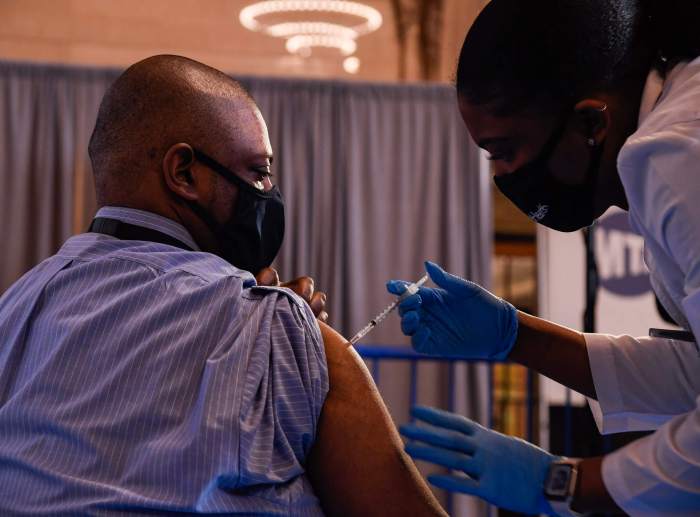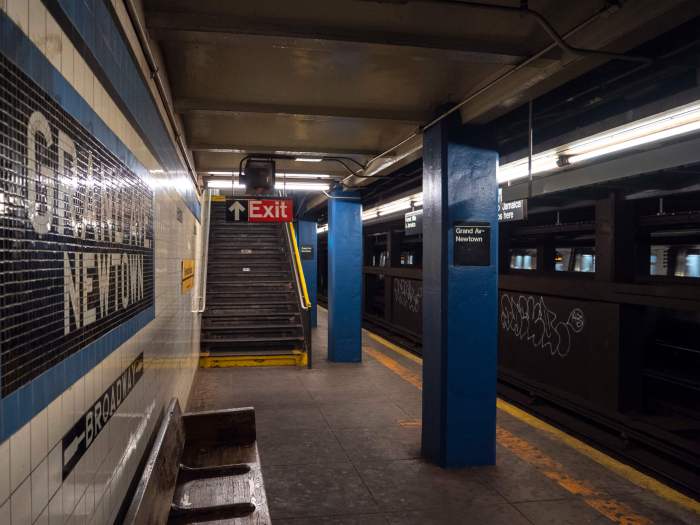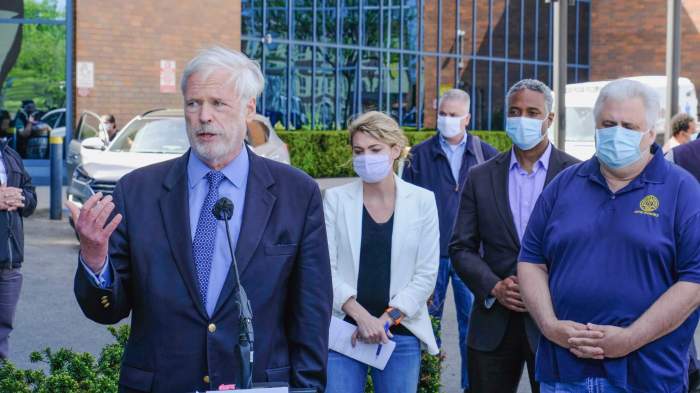Mayor Bill de Blasio conceded to the Metropolitan Transportation Authority’s repeated calls for more NYPD officers in the subways, pledging on Monday a surge of 250 additional officers.
Now, with more than 3,000 NYPD officers in the transit system, de Blasio said the subways will boast the largest NYPD presence in 25 years, but the MTA will need to hire the full 500 officers approved by the MTA board in January 2020 before the COVID-19 pandemic resulted in a hiring freeze for the agency.
Nonetheless, de Blasio said that if the city was able to hire new NYPD officers at this point, so could the MTA.
“Now, that’s what the city of New York is doing. That’s what the NYPD is doing. We need the MTA to pull their own weight as well. It is easy to criticize. How about simply contributing and helping achieve the mission together,” de Blasio said. “So over the past 17 months. We haven’t seen what we needed 17 months ago the MTA approved the hiring of hundreds of new MTA police officers, but here we are basically a year and a half later, and they still haven’t filled all those vacancies.”
The de Blasio administration and the MTA have sparred in recent weeks in light of a series of attacks involving homeless individuals, transit workers, and, as ABC7 reported, two officers in the subway last night.
“Yeah, there was a pandemic, but guess what, we managed to fill police vacancies we managed to fill firefighter vacancies, so the MTA needs to step up, they need to hire, they need to fill those vacancies, and then they need to another thing,” de Blasio added.
According to interim NYC Transit President Sarah Feinberg, the number of cops patrolling the subways will be substitute for a normal daily ridership which has only rebounded to 2.2 million from pre-pandemic numbers of about 5.5 million, which declined by over 90% during the health crisis.
“There’s certainly safety in numbers I think the fundamental disagreement is how do we get from here to there, you know, I feel like we’ve got to make the system feel very safe and secure to customers so we can be responsive to those people who are sitting on the sidelines, not coming back yet,” Feinberg said. “The mayor’s just saying we’re going to get there eventually, like eventually we’ll get to enough, enough riders where we’ll hit that tipping point. I’m saying help us get there. Help me, partner with me to get us there so that the city comes back, and the economy comes back.”
While the MTA, whose finances seem to have stabilized after an infusion of funds from the federal government through the American Rescue Act, has argued that a recent survey indicates that riders do not feel safe in the system, de Blasio has balked at the claim dismissing it as an exaggerated view of the state of trains at this time.
In February, along with the phased reopening of 24-hour service on subways, the MTA and Governor Andrew Cuomo announced that they would resume the hiring the 500 new transit police officers.


















